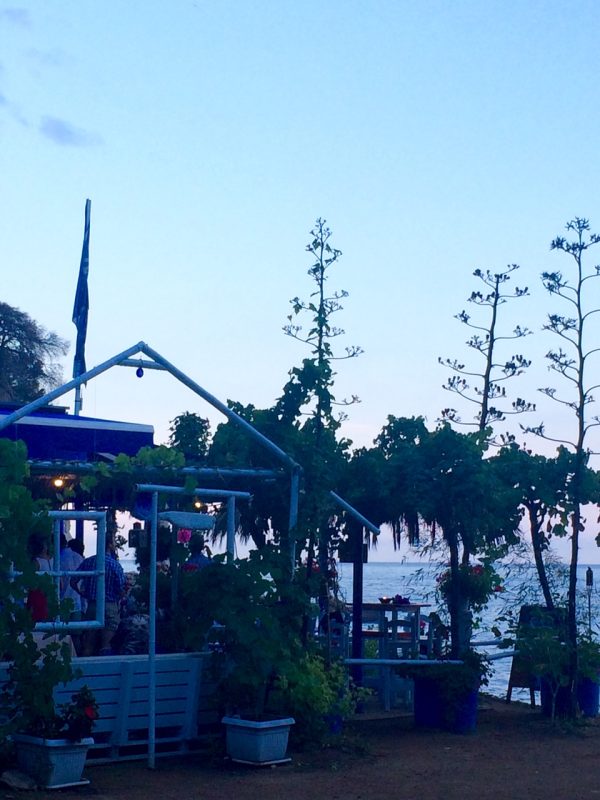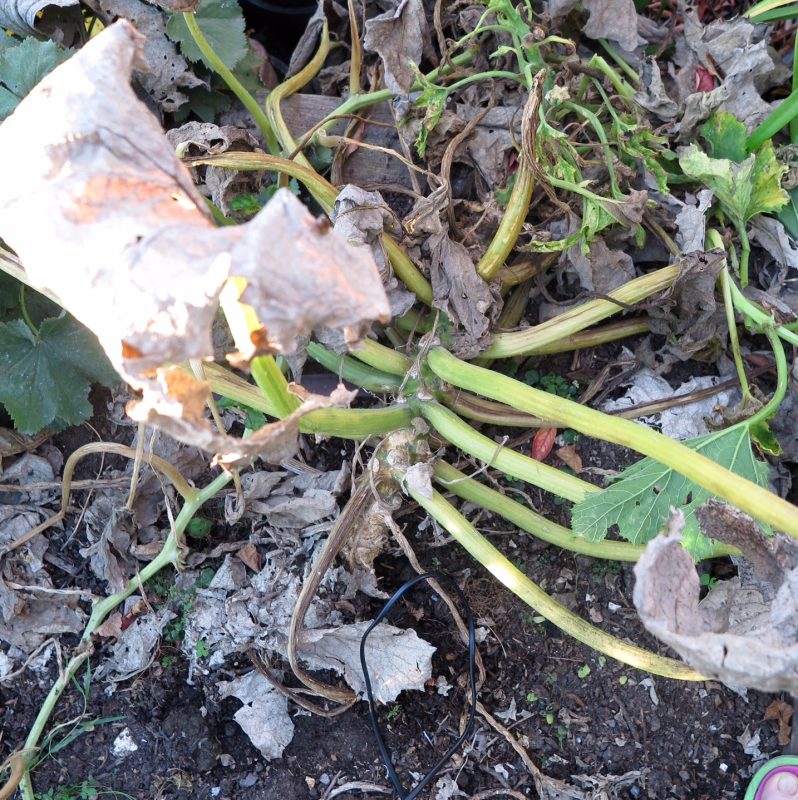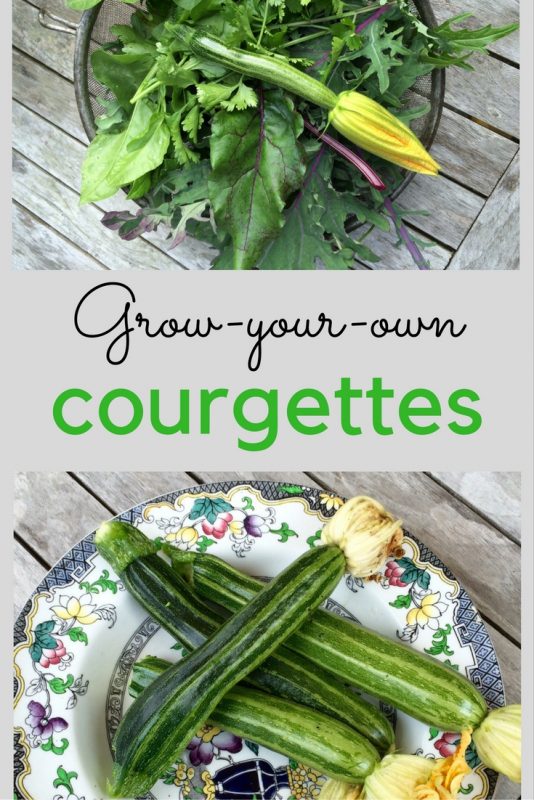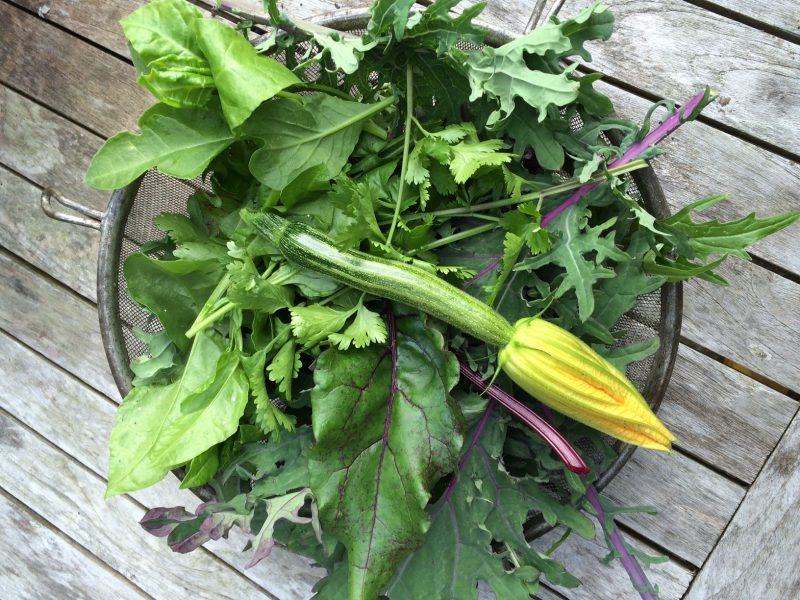I watered my growing courgettes, along with the rest of the garden, before going to Spain for four days. I was really surprised by the courgettes when I got back.

This beach side restaurant at Tossa del Mar, Spain, had an organic veg garden on the beach. You could see the waitresses picking herbs and chillies when the chef needed them. But back to growing courgettes…
While we were away, England had an unexpected heatwave. I hadn’t asked anyone to water the garden.
When I came back, one courgette was mildewed but growing extra leaves. It had two fat courgettes.

I shall nick-name this Fatty Courgette. It has had four days of hot sun without water.
The other had dwindled to just a few stalks.

Next to Fatty Courgette is Stalky Courgette. It also had four hot days in the sun.
They were side-by-side and had the same amount of water. They grew in exactly the same conditions. So what was different about Fatty Courgette? Why did it flourish while Stalky Courgette died?
The answer goes back to sponsored posts I did earlier in the year for Baby Bio. They asked me to write about feeding plants with fertilisers. I looked up various research findings and it seemed clear that feeding ‘hungry’ plants, such as vegetables, does mean more produce.
It also seemed that feeding plants helps them withstand drought and disease. There was plenty of back-up to confirm that the claims were true, but I was slightly doubtful.

Pin to your Pinterest board.
I had always thought that you should ‘feed the soil not feed the plant.’ That, too, is absolutely true. Everything I have come across online or talking to gardening experts is clear. The number one favour you can do your garden is to look after your soil. Add a good layer of compost and/or manure at least once a year. It is the starting point for a good garden.
However, I’ve always done that. I spread the entire annual contents of my home-made compost over my four raised beds every year. I also add manure. Yet my vegetable harvests were often disappointing.

My home-made compost before rotting down. Good compost is essential to a healthy garden.
One reason was that I wasn’t planning and harvesting the veg properly. See more on planning your veg garden here and harvesting veg for maximum yields here.
But both Stalky Courgette and Fatty Courgette have had the same treatment, except for one difference.
Baby Bio also asked me to do their Big Boost Challenge. I grew two identical plants, then fed one with Baby Bio Outdoor liquid feed. I didn’t feed the other. I’ve been comparing their progress over the summer. Included in the trial were courgettes, chillies, beans, mangetout, tomatoes and potted patio roses. I chose container plants and vegetables, because these are the plants most likely to need extra nutrients.
Fatty Courgette and Stalky Courgette were part of the trial. Here they are when they were planted.

Two almost identical courgettes (‘Romanesco’) planted out in May. One was to be fed with Baby Bio and the other would not be fed.
The courgette fed with Baby Bio soon turned into Fatty Courgette. It has given me a total of 39 courgettes over the summer. The other ultimately became Stalky Courgette. Initially, it was healthy, but smaller. Stalky Courgette had a yield of 24 courgettes.

The first courgette of the season came from Fatty Courgette. Stalky Courgette was two weeks behind.
As the summer got hotter, I could also see that Stalky Courgette was suffering more from mildewed leaves. Fatty Courgette had mildew too, but remained more vigorous.
It was the four-day heatwave that really showed the difference between feeding ‘hungry’ vegetables and not feeding them. I was astonished to see how two courgette plants, growing side-by-side, had fared in such a short time.
How much does fertilising your home-grown veg cost?
Although Baby Bio sent me Baby Bio Outdoor Fruit & Vegetable liquid feed, it would have cost around £5 a bottle, depending on where you buy it. That’s enough concentrate for 75 litres of liquid feed. I used about two bottles over the summer on two courgette plants, two tomato plants, four runner bean plants, a potted chili, some mangeout and some other miscellaneous plants that weren’t part of the trial.
The rest of the trial had similar results – around a 30% increase in yields.
I am now convinced. I will be feeding my veggies as well as my soil from now on.

My favourite courgette salad. It’s quick and easy, and it works with overgrown courgettes.
PS: The last two courgettes were too big to cook, so I did my favourite salad. It’s perfect for overgrown courgettes. Slice your courgette with a potato peeler, stopping just before you reach the seeds. Dress the ribbons with 3 tablespoons of olive oil and one of good quality vinegar. Add salt and pepper. Then sprinkle with fresh or dried chillies. Delicious!
The post Growing courgettes – my ‘aha!’ moment… appeared first on The Middle-Sized Garden.
from The Middle-Sized Garden http://www.themiddlesizedgarden.co.uk/growing-courgettes-my-aha-moment/
No comments:
Post a Comment